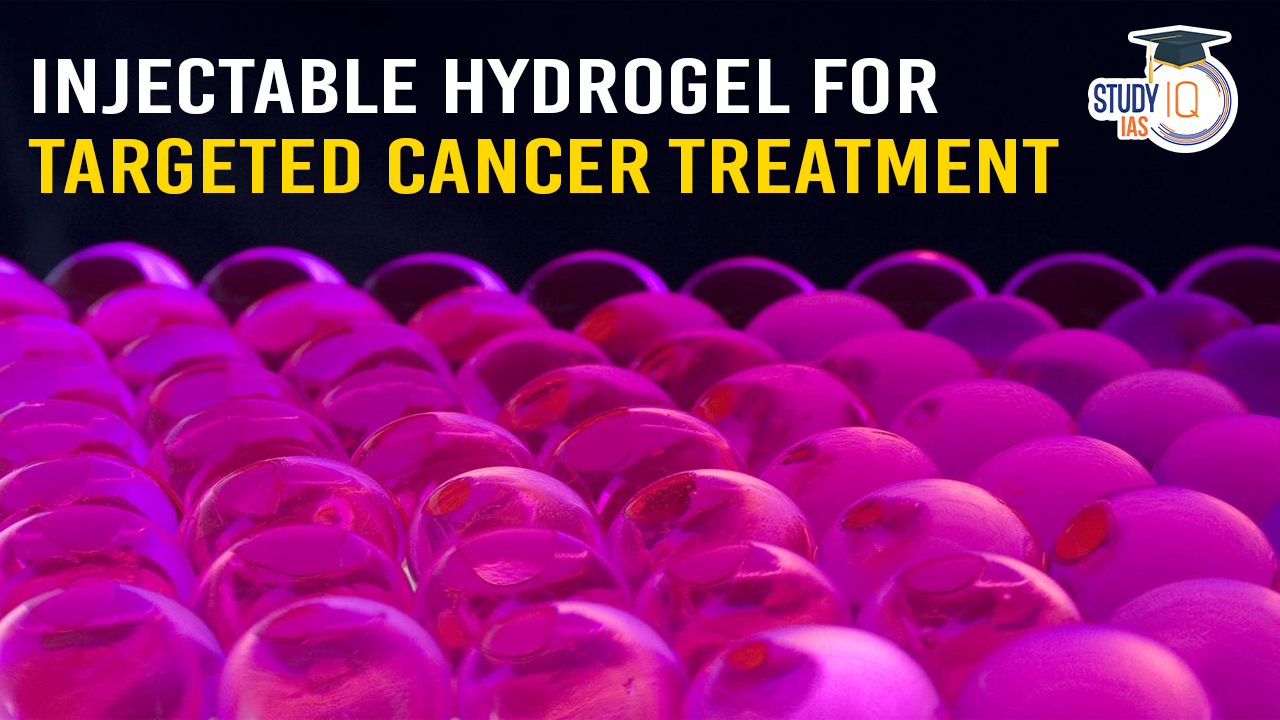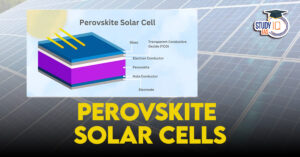Table of Contents
Context: Researchers from IIT Guwahati, in collaboration with Bose Institute Kolkata, have developed an injectable hydrogel aimed at revolutionizing breast cancer treatment.
Key Features of the Injectable Hydrogel
Innovative Design
- Composed of ultra-short peptides, which are biodegradable and biocompatible.
- The hydrogel remains stable at the injection site, ensuring localized treatment.
- Activates in response to elevated glutathione (GSH) levels, a molecule found in high concentrations in tumour cells.
Precision Drug Delivery
- Releases anti-cancer drugs in a controlled manner, targeting cancer cells while sparing healthy cells.
- Minimizes systemic side effects associated with traditional chemotherapy.
About Hydrogels
- Hydrogels are three-dimensional, hydrophilic polymer networks that can retain a large amount of water while maintaining structure due to their cross-linked nature.
- They are soft and flexible, similar to natural tissue, due to their significant water content.
- Composition: Hydrogels can be made from natural or synthetic polymers, such as collagen, gelatin, polyethylene glycol (PEG), cellulose, starch, chitin and chitosan.
Applications
- Tissue engineering: Hydrogels can be used as scaffolds for tissue engineering because their structure is similar to the extracellular matrix of many tissues.
- Wound healing: Hydrogels are a common wound care solution because they are soft, moisturising and can quickly absorb and retain water.
- Drug delivery: Hydrogels can be loaded with drugs and controlled subcutaneously, orally or intramuscularly.
- Environmental Cleanup: They are also used to capture and remove pollutants, especially in water.
- Agriculture: Used to retain soil moisture, especially in arid regions.
- They are also used in Contact lenses & Diagnostic devices.
| UPSC PYQ |
Q. In which of the following are hydrogels used? (2024)
Select the correct answer using the code given below: (a) 1 only (b) 1 and 2 only (c) 2 and 3 only (d) 1, 2 and 3 Answer: D |


 Comprehensive Remote Sensing Observation...
Comprehensive Remote Sensing Observation...
 Perovskite Solar Cells, Objective and Ch...
Perovskite Solar Cells, Objective and Ch...
 Navy-Marine Expeditionary Ship Interdict...
Navy-Marine Expeditionary Ship Interdict...





















